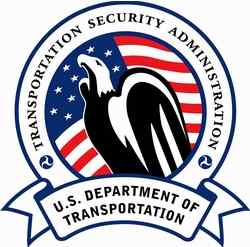Says THAT'S Why Failure Rates Are So High
 When it comes to the
Sisyphean task of testing the effectiveness of current screening
methods at airports, the Transportation Security Administration's
special operations division continues to come up with new and
creative ways to foil screeners' efforts to find hidden explosives
and security threats... which is why, the TSA maintains, screeners
continue to fail to detect such threats at astonishing levels.
When it comes to the
Sisyphean task of testing the effectiveness of current screening
methods at airports, the Transportation Security Administration's
special operations division continues to come up with new and
creative ways to foil screeners' efforts to find hidden explosives
and security threats... which is why, the TSA maintains, screeners
continue to fail to detect such threats at astonishing levels.
So says a classified TSA report obtained by USA Today. The
report details but a few methods testers use to stump screeners...
including packing a makeshift bomb inside a stuffed toiletry kit,
hiding sheets of fake explosives in briefcase linings, and even
smearing plastic explosives on shoelaces.
We already know the results of such efforts.
As ANN has reported,
screeners continue to earn marks so poor, they've (INSERT JOKE
HERE -- Ed.) In addition to a staggering 90
percent failure rate at Denver International earlier this year,
screeners have also managed to rack up "Fs" at Los Angeles
International (a failure rate of about 75%) and Chicago's O'Hare
(60%).
Agency spokeswoman Ellen Howe says the higher negative marks are
to be expected... since the TSA has made the testing much harder
than in the past, when agents would merely hide a gun or an
assembled bomb in otherwise-empty suitcases.
"We want to have higher failure rates because it shows that
we're raising the bar and the tests are harder," Howe said. She
compared screener testing to a basketball game: "You might score
more points against a high-school team, but your skills are going
to be improved if you're playing against an NBA team."
The TSA has significantly stepped up testing efforts in
the past two years. Howe says screeners received an extra hour per
week of training after current agency head Kip Hawley came
onboard.
The agency has also increased the rate of testing at all
airports, in response to another agency study that showed screeners
at San Francisco International improved measurably when they were
tested several times a day... to the tune of finding about 80
percent of all fake bombs sent through.
 In a typical scenario,
an undercover agent slips a bag containing a fake bomb on an X-ray
machine belt. Such testing makes screeners "more suspicious as well
as more capable of recognizing (bomb) components," said the report
-- which also noted, disturbingly, checkpoints at O'Hare were too
congested and too wide for supervisors to properly conduct similar
checks.
In a typical scenario,
an undercover agent slips a bag containing a fake bomb on an X-ray
machine belt. Such testing makes screeners "more suspicious as well
as more capable of recognizing (bomb) components," said the report
-- which also noted, disturbingly, checkpoints at O'Hare were too
congested and too wide for supervisors to properly conduct similar
checks.
Cris Soulia, a screener at San Diego International, tells USA
Today TSA managers are even sneakier in SoCal. Those officials ask
passengers to carry a fake bomb through. "It's nobody we would ever
expect," Soulia said.
Orlando International screener Don Thomas has also noticed
changes in testing methods. A few weeks ago, Thomas says, he was
tested three times in one week... including once at an airport
worker line.
"I kind of like it," he said. "It keeps you a little bit sharp,
and you don't feel pressured, like you're going to get fired or
written up."
That statement may not strike fear into the hearts of
terrorists, however. To continue Howe's earlier basketball analogy,
aviation consultant Rich Roth tells the paper high failure rates
among screeners convince the terrorists they're the pros... and
they're not afraid of the team they're up against.
"The terrorist will think he's got a very small chance of
getting caught," Roth said.
 ANN's Daily Aero-Linx (04.16.24)
ANN's Daily Aero-Linx (04.16.24) Aero-News: Quote of the Day (04.16.24)
Aero-News: Quote of the Day (04.16.24) Airborne 04.10.24: SnF24!, A50 Heritage Reveal, HeliCycle!, Montaer MC-01
Airborne 04.10.24: SnF24!, A50 Heritage Reveal, HeliCycle!, Montaer MC-01 Airborne 04.12.24: SnF24!, G100UL Is Here, Holy Micro, Plane Tags
Airborne 04.12.24: SnF24!, G100UL Is Here, Holy Micro, Plane Tags Airborne-Flight Training 04.17.24: Feds Need Controllers, Spirit Delay, Redbird
Airborne-Flight Training 04.17.24: Feds Need Controllers, Spirit Delay, Redbird




